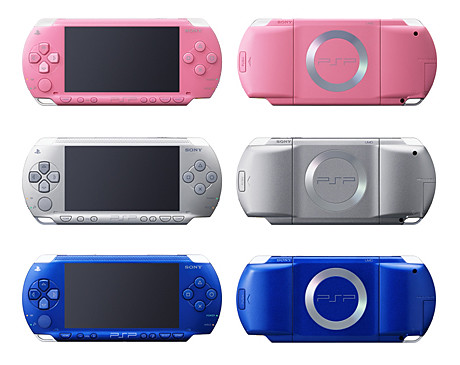By
Daniel Terdiman,
News.com No doubt, there will be lines of hardcore gamers waiting outside retailers across the country late Thursday night, and all expectations are that every PS3 available will be sold before Christmas. That certainly would be good news for Sony, a company that could use a dose of holiday cheer.
Simply put, the PS3 is about more than just gaming for Sony: It's about selling high-definition DVDs and televisions. It's about making investments in cutting-edge technologies pay off. Most of all, it's about improving a once-admired brand that's been badly tarnished over the past year by the recall of hundreds of thousands of laptop batteries, the controversial installation of so-called rootkit software on music CDs, and a government investigation into the company's static random-access memory (SRAM) business.
"They've been kind of beaten down by all the different things going on," said Adrienne Downey, a senior analyst with Semico. "They've really been hoping that the PS3 would be a turning point for the company. If they can get a successful launch of the PS3, they can begin to rebuild mindshare among consumers who were beginning to think that the Sony brand is not what it used to be."
For more than a decade, Sony has dominated the game console business. Between its original PlayStation, which launched in 1994, and its PlayStation 2, which arrived in 2000, Sony has sold well more than 200 million consoles and overtaken the previous leader, Nintendo.
"The PS3 is hugely important for the company right now," said Richard Shim, a senior analyst with IDC. "They're reeling from a series of events [and the PlayStation] has really been the go-to product for them for the last few years."
Holding on to the game console market won't be a cakewalk. Sony has to contend with Microsoft--whose own next-generation console, the Xbox 360, has been on the market for a year and which has already sold more than 6 million units--as well as with Nintendo, which is launching the much-hyped and well-regarded Wii early Sunday morning.
The PS3 is seen in many circles as a technological marvel with stunning graphics, a motion-sensitive controller, a Blu-ray player, and impressive networking capabilities. But the console has also been beset by its own set of blunders--release delays, problems with its blue diode lasers, compatibility issues with older games, and expected supply shortages that could last until spring.
And some worry that its price--$599 for a top-end model--is too high to appeal to a wide audience, even as Sony has had to subsidize the machine's $800 manufacturing price tag. Like Microsoft, Sony is willing to lose money on the console with the hope of making it up on games sales.
There's little doubt that the PS3 will sell like gangbusters in the early going. But the question remains as to how it will sell in the long haul. Some believe it is well-positioned to ultimately win the console war with Microsoft and Nintendo due to intense brand loyalty from video game players and due to new technology.
But if it doesn't live up to expectations, the PS3 could put a real hurt on several other elements of Sony's overall strategy.
First, the company is counting on the PS3 to put Blu-ray players in millions of households and drive sales of Blu-ray movies and other content. Some even think that Blu-ray buyers may choose PS3s because its price is significantly lower than standalone Blu-ray players are expected to be.
"The PS3 is critically important to the future of Blu-ray," Semico's Downey said. "Sony's been betting on the PS3 to launch Blu-ray for some time now, so they're really hoping [it] will sell well and take off and get Blu-ray into all those households."
If the PS3 doesn't sell well, "would Blu-ray still win?" asked Ted Schadler, an analyst with Forrester Research who has predicted the format's ultimate victory over the competing HD DVD. "My bet is that it would. But it would be a slower victory. The PS3 is like an accelerant [for Blu-ray], like gasoline on the fire. It could delay the clear winner [of the Blu-ray/HD DVD war] by a year if this thing bombs in the market."
Similarly, Sony and partners IBM and Toshiba have invested hundreds of millions of dollars in the creation of the Cell processor, the PS3's brain. Some industry watchers believe that the investment is riding on the console's success.
That said, Tony Massimini, chief of technology at the analyst firm Semico, said he sees the importance of the PS3 to the processor and the infrastructure but believes that the companies behind the Cell will push it regardless of PS3's fortunes.
"Initially, the PS3 is important. But in the long term, it's [just] one of several markets," said Massimini, referring to high-definition video equipment and other products that can use the Cell. "I don't think it would necessarily [be a problem] for the Cell [if the PS3 fails]. Too much has been put into it."
Sony also hopes the PS3 can play a big role in the digital living room.
Richard Doherty, president of the analyst firm Envisioneering, said the PS3, which ships with high-speed, gigabit capability, could be the device that enables consumers to bring in all manner of multimedia content to their homes for years to come, much of which Sony will surely try to sell directly or at least get some revenue from.
Sony acknowledges the importance of the PS3 to its future. "I think we've [the PlayStation group] contributed up to half of the bottom line profits to Sony," said Jack Tretton, vice president of sales and marketing for Sony Computer Entertainment America. "We're a key pillar in the Sony strategy. [But] with that comes a lot of expectation and a lot of pressure."
The console could have a big effect on sales of Sony high-definition TVs, Sony's movies on Blu-ray DVDs, and the company's music library, he said.
"In the past, we were in the gaming business, and the gaming business had very loose ties, if any, to other [Sony] divisions," Tretton said. "With PS3, we have very direct ties."
Ultimately, Sony has great hopes for the PS3. But the ragged lead-up to the product launch early Friday morning has reminded many of how much the electronics giant has riding on this release.
Sony's "legacy is that they're an engineering company, and that's what they hang their hat on," Shim said. "So if they're unable to put out a product that doesn't have bugs, then that hits them right in the heart of their competency."
 One of Sony's biggest problems has been supply. Not just with the PS3, but many core components of their hardware business, most especially with Blu-ray devices. In particular, the blue laser diodes they are manufacturing with others have come much slower than expected, resulting higher costs and slower adoption. According to some, that'll start to decline considerably in 2007. Sony will definitely need it if they want to even approach their goal of 6 million PS3's by March, especially since they have not even reached 350,000 sold. Sony's secondary source of the diodes, Nichia, is meeting with very high failure rates. As a result of this, another company is stepping in:
One of Sony's biggest problems has been supply. Not just with the PS3, but many core components of their hardware business, most especially with Blu-ray devices. In particular, the blue laser diodes they are manufacturing with others have come much slower than expected, resulting higher costs and slower adoption. According to some, that'll start to decline considerably in 2007. Sony will definitely need it if they want to even approach their goal of 6 million PS3's by March, especially since they have not even reached 350,000 sold. Sony's secondary source of the diodes, Nichia, is meeting with very high failure rates. As a result of this, another company is stepping in: 






